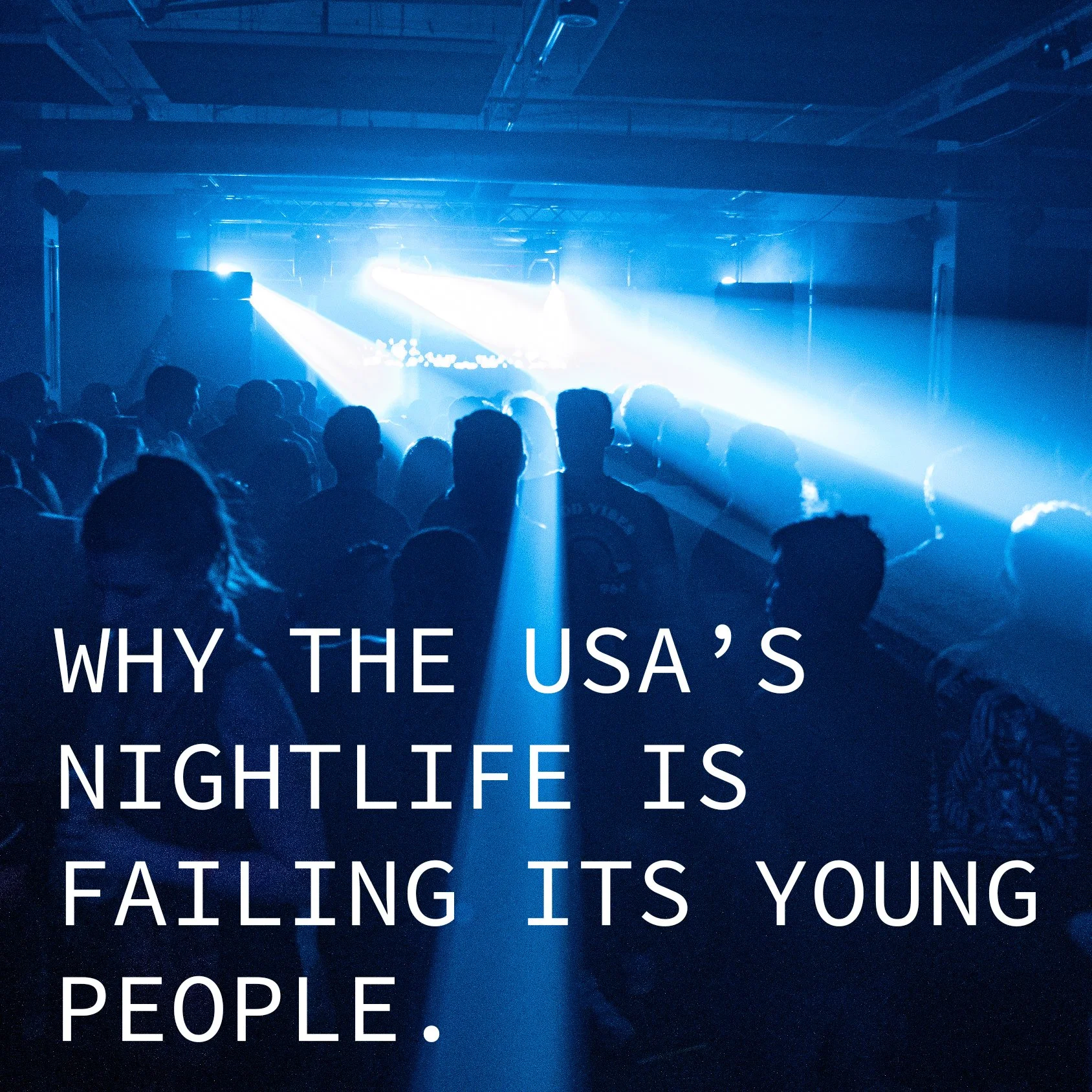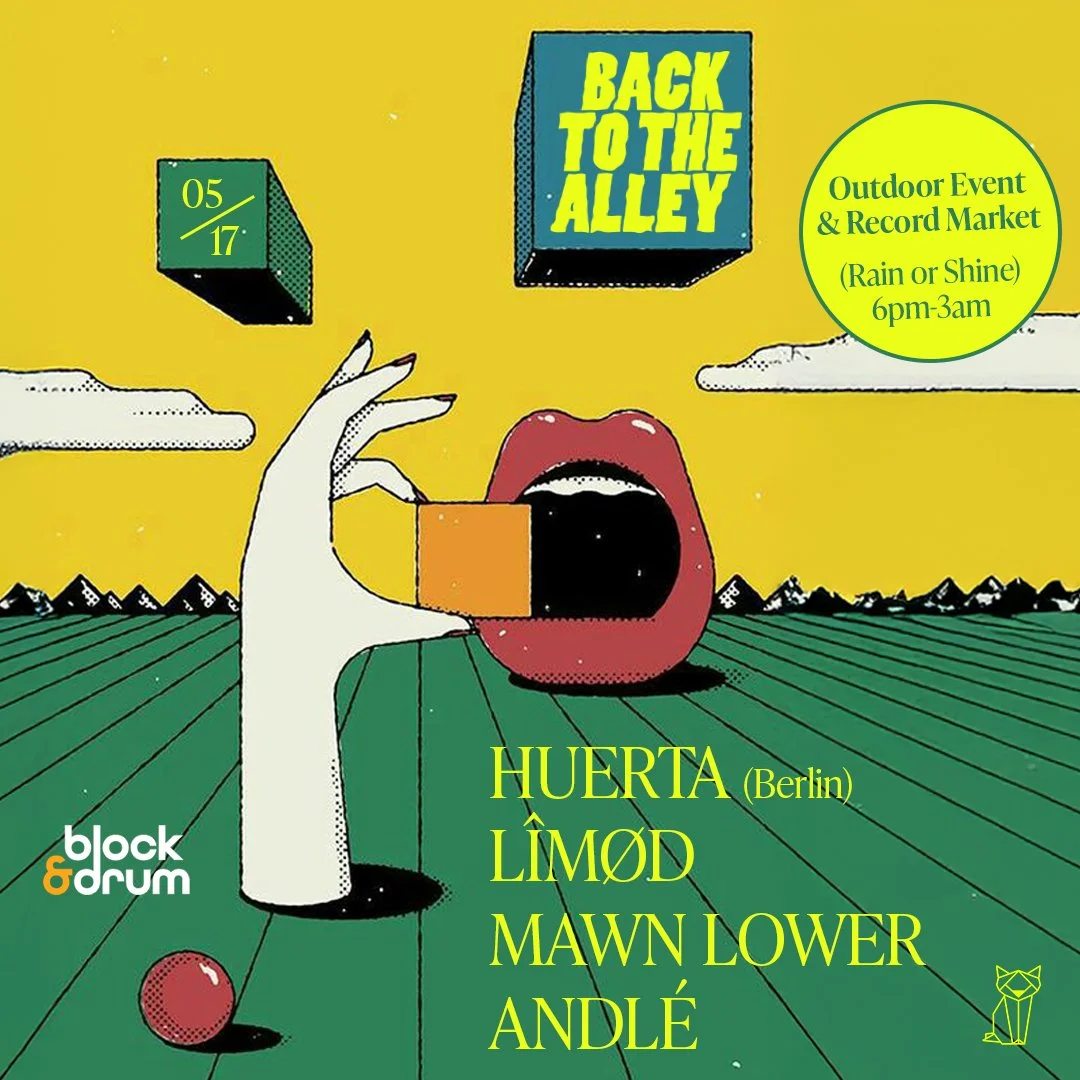Why America’s Nightlife is Failing Its Young People
Why are 18–20 year olds banned from America’s dance-floors while the rest of the world embraces them?
In the United States, if you are between 18-20 years old, you have probably felt the frustration of being shut out of the nightlife world. While young people around the world are dancing in nightclubs, discovering music, and building cultural experiences, you are stuck on the sidelines. Not because you are too young to understand it, but because outdated drinking laws treat going out and drinking as if they are the same thing.
It was not always like this. Our parents grew up in a different America where the legal drinking age was 18. After the Vietnam War, the thinking was simple. If you were old enough to fight for your country, you were old enough to vote and to drink. Nightlife thrived because young people were allowed to participate, not excluded.
That all changed in 1984 when the federal government passed the National Minimum Drinking Age Act. Faced with rising drunk-driving fatalities, lawmakers threatened to withhold highway funding from any state that did not raise its drinking age to 21. States complied, but the move had unintended long-term effects. While it achieved its public safety goals, it also changed nightlife in ways we are still dealing with today.
It is important to be clear about what the law actually says. There is no federal law that makes it illegal for 18 to 20 year olds to enter a nightclub where alcohol is served. Legally, it is allowed in many states as long as they are not drinking. However, most clubs choose not to allow them in at all because the risk is simply too high.
In most states, fines for serving alcohol to someone underage can reach $5000 or more per person. Even if it cannot be proven who served them, the venue still faces legal trouble just for having them inside. The risk does not stop there. If an underage person leaves the club and something happens off-site, the venue can still be held legally responsible if their alcohol is traced back to that establishment.
For most owners, the chance of massive fines, legal problems, and losing their liquor license is simply not worth it. Allowing 18 to 20 year olds into the club requires extra staff, stricter policies, and trust on both sides. Most venues choose the safer and more lucrative option of keeping them out completely.
18+ can go to war but they can’t dance at a nightclub.
And yet, the rule feels more absurd when you step back and look at it. In America, you can join the military at 18, be sent to war and carry a weapon, but you can’t dance in a nightclub. We treat adulthood as starting at 18, but we deny young adults the right to participate in one of the oldest social traditions which is dancing and connecting through music.
This does not just hurt individuals. It hurts the culture itself. If young people are not allowed to experience nightlife, how can they grow socially and musically? Nightlife has never been just about alcohol. It is about community. It is about hearing music you would never find on the radio. It is about standing shoulder to shoulder with strangers who eventually feel like family. By keeping young adults out, we stunt their growth and the growth of the scene itself. We are also cutting the scene off from the energy and creativity that young people bring.
House and techno, the very foundations of modern club culture, were built by young people. Larry Levan, Frankie Knuckles, Juan Atkins, and Derrick May were all barely out of high school when they started making history. The early underground scenes in Chicago, Detroit, and New York thrived on the energy of youth. If we want to keep the scene alive in America, we need to make room for the next generation to step in and shape it.
Meanwhile, countries all over the world have long embraced 18 as the legal drinking age. In Canada, young people can legally drink at 18 or 19 depending on the province. Across Europe, Latin America, and Australia, 18 year olds are welcomed into nightlife. The rest of the world sees youth as part of the future. It is time we do the same.
What makes this moment even more urgent is that young people today are not learning from the generation that came before them. Instead, they are learning from corporations. These are the same corporations that have bought up major festivals, taken over big clubs, and turned nightlife into a packaged experience. COVID-19 only made this worse. When clubs shut down, many veterans of the scene never returned. What was left for the youth was livestreams, social media, and branded events created by marketers instead of communities. We cannot expect the next generation to carry the culture forward if we do not give them real spaces to experience it the way it was meant to be lived. This is not something you learn from a screen. It happens on a real dance floor, in a real room, with real people.
The good news is that Gen Z is drinking less than any generation before them. Young people today are showing up for the music, the connection, and the culture. They are not looking to get drunk. This makes it the perfect moment to rethink how we include them.
We also live in a time when rideshare apps like Uber and Lyft have completely changed how people get home safely. Unlike the 1980s, when drunk driving was one of the biggest killers of young people, today’s nightlife has far more tools to prevent tragedies. With transportation options just a few taps away, the idea that locking young people out is the only way to keep them safe feels increasingly outdated. We now have smarter ways to prevent harm and promote responsibility.
To be clear, we are not advocating for underage drinking. We fully support the legal drinking age as it stands. But the drinking laws should not keep young adults from dancing, discovering music, and participating in the cultural spaces they will one day inherit. Dancing is not drinking. Community is not consumption. It is time we separate the two.
Of course, this can only work if we build it on trust. Young people need to respect the space and the community. Venues need to trust that people are showing up for the right reasons. We all have to hold each other accountable to make sure this works.
This is why we are treating Back to the Alley as an experiment. This is not a permanent policy or a guaranteed change. We are starting with this event only, offering just 50 tickets for 18 to 20 year olds to join us on the dance floor. Based on how this goes, we will decide whether to create more opportunities in the future.
We cannot do this alone. We need everyone’s support. Most importantly, we need the 18 to 20 year olds who take part to respect the space, follow the rules, and show other venues that this can be done the right way. If we can prove that this works, we can encourage more clubs to follow our lead and help build a stronger, more connected scene for the future.
If we care about the future of nightlife, we need to give the next generation a chance to experience it for themselves. We need to trust them, support them, and most importantly, let them dance.




